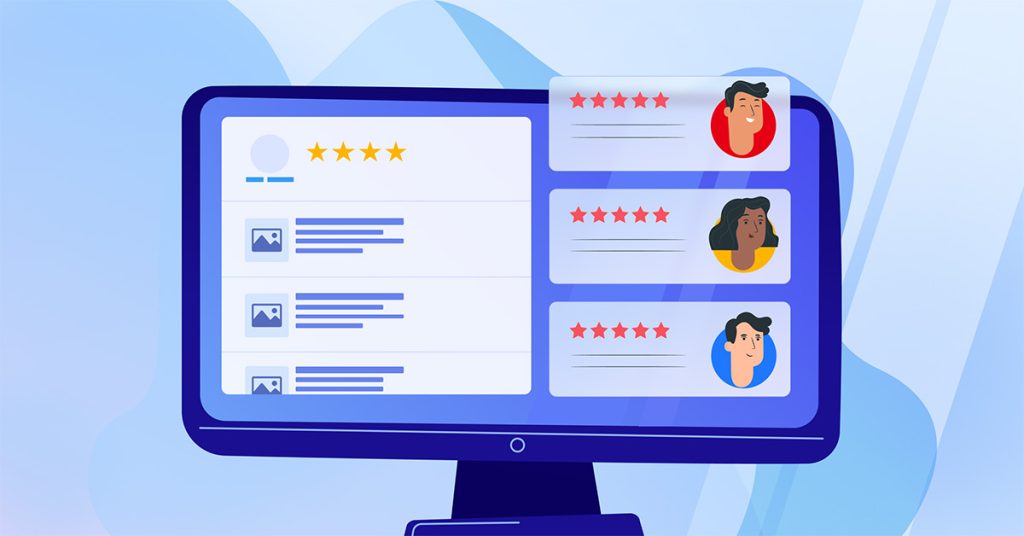
Ensure your site has these website essentials to create meaningful interactions with your customers and engage website visitors.
When you start building your site, you want to ensure it includes all the website essentials to invite customers, provide them with information, allow them to get in touch with you and engage them in meaningful conversations that lead to sales.
Ensure you have these website essentials and consider updating your site to include those that you’re lacking.
Here’s a look at the must-have features and elements you want to have on your website regardless of the industry or customers you serve.
Consumers need to know some basics about your company. These essentials might include:
Some of these details can go in your footer while others will be sprinkled across your site.
Your website should be easy to navigate. What that means is, you should not have pages buried so deep in your website that it takes several clicks to get there.
When designing your site’s navigation, try not to nest menu items inside of others that will require expanding out a category under another category. Evaluate your website’s navigation to see if you can simplify it and raise important pages to the top to ensure that people can find what they are looking for.
Photos help make a website come to life and make it feel relatable. Plus, good visuals can communicate information at a glance.
As you design your website consider whether you can include the following to help keep your website engaging.
You can spend thousands of dollars for a website that looks great, but no one ever visits it because you didn’t take the time to focus on the back-end technology to ensure speed.
Many companies getting started with a free template on one of the major DIY website creators, like WordPress, Squarespace or Wix. The problem is that these free templates are often not optimized for speed. They include extra code that isn’t necessary, which can slow down your site. Other times, users inadvertently add plugins that slow down their websites not realizing there are better solutions to their needs.
Unless you are a business just starting out and have no customers yet, you should include social proof on your website. Social proof includes reviews, testimonials and case studies featuring real people who have used your products and services and can share their experience. This shows that others who have experienced what your prospects are going through have made it to the other side and experienced success thanks to your products and services.

Too often, websites are all about the company marketing its products. But that isn’t very welcoming or informative for individuals trying to figure out the best next steps in their search for answers.
Spend less time talking about yourself and more time talking about how you help customers. Talk about their pain points and how you help resolve those pain points.
Interview customers or potential customers to learn more about what they are looking for in a solution to create more customer-centric content.
Every website needs a contact us page. But simply having a page isn’t enough. You need to consider how seamless it is to get in touch with you. Include a contact us module in your footer. Perhaps it’s a form or a link to your page. If you have the staffing to support live chat, consider adding this feature to your website to allow customers to get answers fast.
Having a page for each of your products or services allows you to go in-depth about what it does and how it works. Dedicated pages also allow you to post many photos and videos of the product to give greater context to your viewers.
Explain the product’s benefits and include FAQs about the products or services to answer questions without the customer needing to reach out to you.
No matter the nature of your business, your website needs clear call-to-action (CTA) buttons. Every page should have a call to action that is strategically placed to encourage users to take the next step.
Your call to action might vary from one page to another. For example, on a blog you might invite a user to sign up for your newsletter or download an E-book to learn more. But product pages have a clear buy now button or add to cart. The CTA should match the page type and where the customer potentially is in the buying journey.
Videos can increase your website’s conversion rates exponentially. Research shows that websites with videos have an average conversion rate of 4.8 percent. In contrast, websites without videos have an average conversion rate of 2.9 percent.
Some businesses have left the about us page behind, feeling it isn’t professional and necessary. But it can add a personal touch to your website that helps people learn more about you and what you’re offering. It can also help reinforce the geography that you serve, tell your story and provide greater context for why you are an expert in your field.
Great content helps customers go from asking questions to feeling confident in purchasing your products or services. It can help reduce the friction between you and a customer because you are able to answer questions before they have to go through the process of asking the question.
As you consider your content mix, evaluate whether you can create these types of content.
One of the best ways to generate traffic to your website is to optimize it for search. Search engine optimization involves several important steps and careful strategy.
New Light Digital is an expert website builder, SEO strategist and website optimization firm. Our comprehensive services include content management, social media, reputation management and more. Schedule a free consultation now to learn more about how to ensure your website has all the essentials and tenants of a great site.
Further reading: